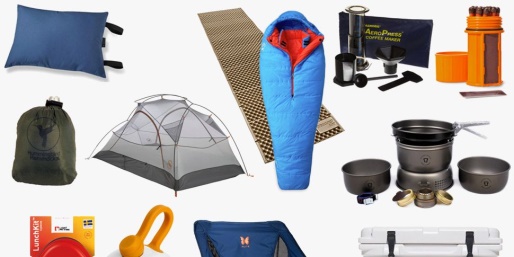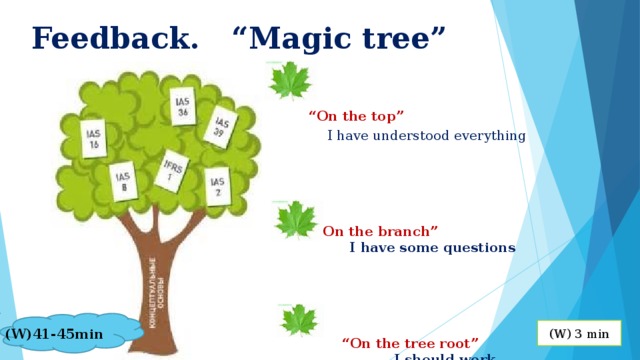
|
Unit 5: Hot and Cold |
|||
|
Teacher name: |
Masalim Aigerim |
||
|
Date: |
|||
|
Grade: 4 |
Number present: |
absent: |
|
|
Lesson title |
Camping Safety |
||
|
Learning objectives |
4.2.1.1 make basic statements which provide information on an increasing range of general and some curricular topics 4.4.7.1 spell most familiar high-frequency words accurately when writing independently 4.5.10.1 use common present continuous forms, including short answers and contractions, to talk about what is happening now and future arrangements on a limited range of personal and familiar topics, use -ing forms swimming, spelling as nouns to describe familiar and classroom activities |
||
|
Lesson objectives |
Learners will be able to: - to talk about camping and camping safety |
||
|
Value links |
Loyalty – Loyalty might be a core personal value to you if you highly prize friends that are reliable and trustworthy. You might put your friends or chosen family first, always being there for them when they need you. |
||
|
Plan |
|||
|
Stages / Time |
Teachers actions |
Students actions |
Assessment criteria |
Resources |
|
Beginning of the lesson Warming-up
3 min
Pre-learning «Brainstorming» method 7 min.
|
Organization moment : 1.Greeting. Ask about the weather. The teacher sets the lesson objectives, letting students know what to anticipate from the lesson. Warming up Where are you from? How old are you? What color is it? How many students are there in class? What day of the week today? Ask a few pupils to stand up and stand in a row. Ask the rest of the class questions to revise the ordinals. Lead – In
|
The aim: To develop pupils speaking skills and create friendly atmosphere Efficiency: By wishing each other they feel better and feel the support of others Students of the class are listed. Students' attention is drawn to the lesson. Determines the topic and purpose of the lesson •Learners remember previous lesson vocabulary
Students say different words from the picture Answer the question. |
The teacher to assess learners for their ability. “Good job! Well done!” Formative Assessment
Good job!
Assessment criteria - Learners have met the learning objectives if they can talk about camping and camping safety |
Pictures
worksheet
Student’s book |
|
Middle of the lesson Presentation part. 30 min
|
Ex:5 P:70 • Put up the Camping poster on the board. Point to the items, one at a time, and say the corresponding words. The pupils repeat, chorally and/or individually. Point to each item in random order. Ask individual pupils to name them. The pupils read the words and match them to the pictures. Allow the pupils some time to complete the activity. Then they listen again and check their answers.
Ex: 6 P: 70 • Explain the activity. Allow the pupils enough time to complete the activity. Check their answers.
Ex: 7 P: 71 • Say and write on the board: You must do your homework. You mustn't throw rubbish. The pupils repeat, chorally and/or individually. Underline the words in bold and explain/elicit that these are modal verbs. Explain that we use must for obligation and mustn't for prohibition. Then say and write on the board: You have to study for the test. You don't have to wear a jacket. The pupils repeat, chorally and/or individually. Underline the words in bold and explain that we use have to for necessity and don't have to for lack of necessity. Explain that the modal verbs are the same for all persons.
Conclusion during the lesson some tasks differentiated by outcomes of the students and by their abilities. |
• Pupils match the words to the pictures. Then listen and check? ANSWERS 2 a 3 b 4 g 5 f 6 h 7 d 8 c 9 J 10 I
• Pupils read and find the words. ANSWERS 2 firewood 3 whistle 4 campfire 5 camp stove 6 rope 7 blanket 8 penknife 9 fishing rod 10 cool box
• Pupils complete the sentences. Use: must or mustn't. ANSWERS 2 must 3 must 4 mustn't 5 must 6 mustn't 7 must 8 mustn't
|
Descriptor: - match the words to the pictures - ask individual pupils to name them Total: 3 point
Descriptor: - read and find the words. -complete the sentences Total: 3 point
Descriptor: - complete the sentences - can use: must or mustn't. Total: 1 point
-Make CCQ questions Yes / No Total: 10 point |
Card Worksheet
Students book |
|
End of the lesson 5 min |
FEEDBACK Learners provide feedback on what they have learned at the lesson. Ex: P: Home task: Write the days |
|
Poster Success
|
|
жүктеу мүмкіндігіне ие боласыз
Бұл материал сайт қолданушысы жариялаған. Материалдың ішінде жазылған барлық ақпаратқа жауапкершілікті жариялаған қолданушы жауап береді. Ұстаз тілегі тек ақпаратты таратуға қолдау көрсетеді. Егер материал сіздің авторлық құқығыңызды бұзған болса немесе басқа да себептермен сайттан өшіру керек деп ойласаңыз осында жазыңыз
Ашық сабақ Camping Safety
Ашық сабақ Camping Safety
|
Unit 5: Hot and Cold |
|||
|
Teacher name: |
Masalim Aigerim |
||
|
Date: |
|||
|
Grade: 4 |
Number present: |
absent: |
|
|
Lesson title |
Camping Safety |
||
|
Learning objectives |
4.2.1.1 make basic statements which provide information on an increasing range of general and some curricular topics 4.4.7.1 spell most familiar high-frequency words accurately when writing independently 4.5.10.1 use common present continuous forms, including short answers and contractions, to talk about what is happening now and future arrangements on a limited range of personal and familiar topics, use -ing forms swimming, spelling as nouns to describe familiar and classroom activities |
||
|
Lesson objectives |
Learners will be able to: - to talk about camping and camping safety |
||
|
Value links |
Loyalty – Loyalty might be a core personal value to you if you highly prize friends that are reliable and trustworthy. You might put your friends or chosen family first, always being there for them when they need you. |
||
|
Plan |
|||
|
Stages / Time |
Teachers actions |
Students actions |
Assessment criteria |
Resources |
|
Beginning of the lesson Warming-up
3 min
Pre-learning «Brainstorming» method 7 min.
|
Organization moment : 1.Greeting. Ask about the weather. The teacher sets the lesson objectives, letting students know what to anticipate from the lesson. Warming up Where are you from? How old are you? What color is it? How many students are there in class? What day of the week today? Ask a few pupils to stand up and stand in a row. Ask the rest of the class questions to revise the ordinals. Lead – In
|
The aim: To develop pupils speaking skills and create friendly atmosphere Efficiency: By wishing each other they feel better and feel the support of others Students of the class are listed. Students' attention is drawn to the lesson. Determines the topic and purpose of the lesson •Learners remember previous lesson vocabulary
Students say different words from the picture Answer the question. |
The teacher to assess learners for their ability. “Good job! Well done!” Formative Assessment
Good job!
Assessment criteria - Learners have met the learning objectives if they can talk about camping and camping safety |
Pictures
worksheet
Student’s book |
|
Middle of the lesson Presentation part. 30 min
|
Ex:5 P:70 • Put up the Camping poster on the board. Point to the items, one at a time, and say the corresponding words. The pupils repeat, chorally and/or individually. Point to each item in random order. Ask individual pupils to name them. The pupils read the words and match them to the pictures. Allow the pupils some time to complete the activity. Then they listen again and check their answers.
Ex: 6 P: 70 • Explain the activity. Allow the pupils enough time to complete the activity. Check their answers.
Ex: 7 P: 71 • Say and write on the board: You must do your homework. You mustn't throw rubbish. The pupils repeat, chorally and/or individually. Underline the words in bold and explain/elicit that these are modal verbs. Explain that we use must for obligation and mustn't for prohibition. Then say and write on the board: You have to study for the test. You don't have to wear a jacket. The pupils repeat, chorally and/or individually. Underline the words in bold and explain that we use have to for necessity and don't have to for lack of necessity. Explain that the modal verbs are the same for all persons.
Conclusion during the lesson some tasks differentiated by outcomes of the students and by their abilities. |
• Pupils match the words to the pictures. Then listen and check? ANSWERS 2 a 3 b 4 g 5 f 6 h 7 d 8 c 9 J 10 I
• Pupils read and find the words. ANSWERS 2 firewood 3 whistle 4 campfire 5 camp stove 6 rope 7 blanket 8 penknife 9 fishing rod 10 cool box
• Pupils complete the sentences. Use: must or mustn't. ANSWERS 2 must 3 must 4 mustn't 5 must 6 mustn't 7 must 8 mustn't
|
Descriptor: - match the words to the pictures - ask individual pupils to name them Total: 3 point
Descriptor: - read and find the words. -complete the sentences Total: 3 point
Descriptor: - complete the sentences - can use: must or mustn't. Total: 1 point
-Make CCQ questions Yes / No Total: 10 point |
Card Worksheet
Students book |
|
End of the lesson 5 min |
FEEDBACK Learners provide feedback on what they have learned at the lesson. Ex: P: Home task: Write the days |
|
Poster Success
|
|

шағым қалдыра аласыз






















